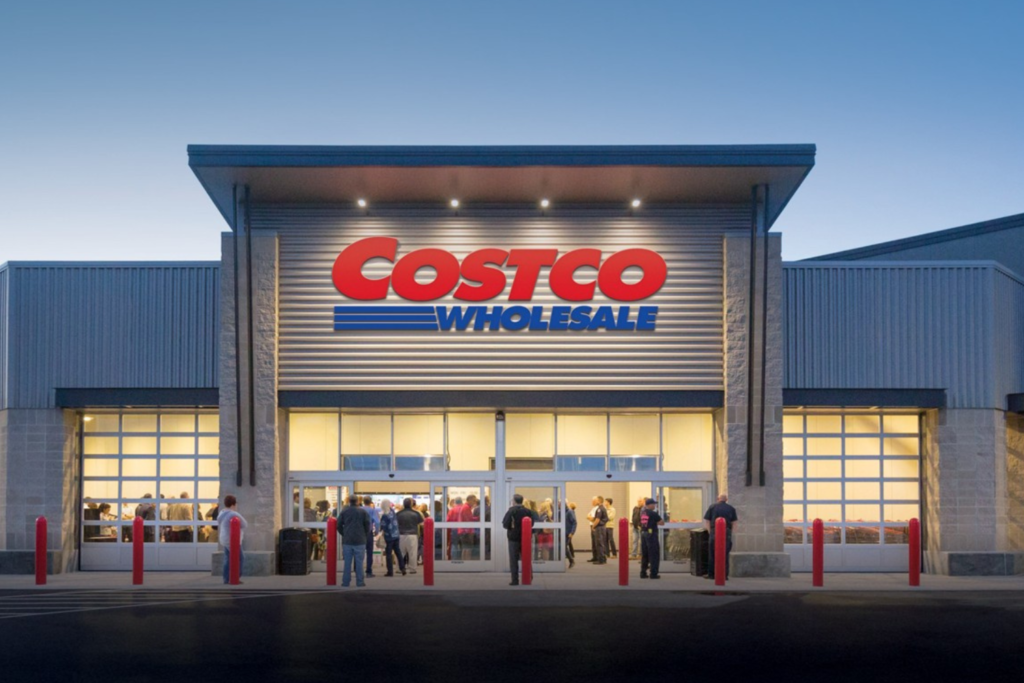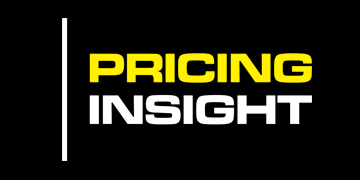Case Study – Staples / Corporate Express
Executive Summary
Pricing Insight was engaged to work with Staples, one of Australia’s largest and most reputable stationary companies.
- $1.0B in annual revenues
- Selling 25,000 SKUs to 20,000+ customers
- Gross margins of 27% and EBIT margins of 6% – under significant margin pressure
- Engaged Pricing Insight to develop pricing strategy to improve gross margins
- $6.8M in gross profit generated in 12 months, on addressable project revenues of $80M
- Achieved using Pricing Insight’s proprietary value based algorithmic price optimisation program that generates risk free incremental gross margin profit
Losing profits despite growing revenues
Staples approached Pricing Insight, back when they were known as Corporate Express, a few years before they were taken over by Staples. They had just taken a rocket ride on the stock market, having increased from just 20 cents per share, to $10.00 per share, across a period of 10 years.
Corporate Express / Staples had been experiencing incredible growth rates for over 10 years, however, in the last year, prior to contacting Pricing Insight, revenues had grown by 5%, but profits had declined by 3%. This was the first time in the company’s history where there had been increase in revenues, yet a decline in gross margin profits.
An outdated pricing strategy, in need of an overhaul
Pricing Insight met with the Chief Operating Officer (COO) to understand the business in more detail. Interestingly, the COO was quite clear about the company’s business model and sources of profitability. In his words, they were a “buy side” business – generating profit by buying cheaply and selling at, or below, market rates and trying to win business on price alone.
Now, this strategy can work for a time, but at some point, your competitors will copy your strategy and you will lose your competitive advantage.
This is exactly what happened to Corporate Express / Staples. Customers were switching to other suppliers as there was a perception Corporate Express was too expensive.
The Chief Financial Officer (CFO) was extremely concerned with the results and was asking some hard questions. Naturally, the Chief Executive Officer (CEO) was also asking questions of the COO, and the CFO. There was a lot of pressure, being a publicly listed company, to find an answer and restore profitability back into the business.
The other complicating factors in this marketplace were new market entrants who were nimbler and more aggressive. We discovered these competitors were quite focused on their pricing strategies and trying to find ways to improve their profitability.
Gross margin pressure – the procurement threat
The business was also under pressure from procurement. Procurement has had a substantial impact on the business landscape over the last 15 to 20 years, becoming more sophisticated and aggressive in their tactics and strategies to get reductions in invoice prices and more concessions, such as increased service levels and assignment of supply chain risk, back to their suppliers.
Another factor the business faced, as many businesses do, was the loss of experienced sales executives. Many experienced staff had started to move on, after 10+ years with the company. A lot of the intellectual capital went with them, and a whole crop of new, inexperienced sales executives were joining the business.
These new comers began applying some of the tactics and approaches they had employed in other industries, which had possibly been higher margin industries who could afford to discount. At Staples however, gross margins were just 27%, with EBIT margins of just 6 cents in the dollar.
Staples had a very narrow price bandwidth to play with before they started to lose money. Many of these inexperienced executives were offering discounts of 5, 10 and 15%. However, if you’re only making 6% net profit margin before tax, and offering discounts of 10 and 15%, you’re offering discounts that are 2 – 3 times the actual profit margins of the business.
Very quickly that level of discounting will have a major impact on gross margins and net profit margins. If you lose one or two points of gross margin with EBIT margins of 6%, earnings will be impacted by up to 30%.
What Pricing Insight discovered
Pricing Insight undertook an initial diagnostic to understand the current pricing operations of the business and analysis of the data at an SKU [stock keeping unit] level.
Pricing Insight looked at 5000+ line-item SKUs across a couple of different channels to market. This analysis revealed many inconsistent approaches to pricing across the functional divisions, and across the states and territories.
Corporate Express / Staples sells many different products. From pens and pencils and stationery items, through to furniture, print and promotional items. Many different approaches to pricing were evident.
There was an overriding culture of cost-plus mark-up to set prices, and many items were in fact overpriced, and so they just simply didn’t sell. There were also quite a number of items that were found to be under-priced, as well.
Quick-wins
Undertaking an initial diagnostic enabled Pricing Insight to establish some very effective quick-wins. As part of these quick-wins, we were able to increase the price of coffee by $4. This small change resulted in a half a million-dollar instant improvement to gross margins, which consequently went straight to the bottom line.
We also uncovered an interesting situation relating to the orange “fragile” tape often used by removalists. It was discovered the cost in the system was incorrect, and the tape was under-priced. Sales reps had been using a mark-up on cost approach to set prices and as such, the sale price was too low.
In fact, the prices for this fragile tape in the competitor’s retail store was around $17-$18. Corporate Express / Staples were selling it for about $2.50, because the cost in the system was $1.50. The cost in the system should have been around $9. Pricing Insight corrected the pricing, and successfully generated over $225,000 in gross margin income for that line item alone.
In hindsight, these pricing discoveries appear obvious, but are never obvious if you don’t know to look for them. In all, there was a range of gains that were made very quickly across the business which added up to over $1.5M of gross margin quick-wins.
Excessive discounting & inflated system costs
Pricing Insight also found staff were providing excessive discounts to selected customers.
There were list price structures that were rendered ineffective due to the wide disparity between the list price, the net market price, and the lack of price relativities across products within product subgroups. Many customers received the same aggressive discounts regardless of who they were, despite the business setting up price tiers to attempt some form of price segmentation to capture value.
Much of the business was sold on tender, and often these tenders were set on a cost-plus market basis. An attempt to protect margins was made by creating a total basket of goods for sale as a bundle. However, unknown to the sales force, the actual costs of the entire product range were inflated in the system in an attempt to protect the margins, resulting in many tenders that were lost, simply because the tender was too expensive relative to the rest of the market. The cost-plus mark-up mind set meant that salespeople set prices against inflated cost.
Mistake – procurement sets the sales strategy
This situation led us to make a discovery about the culture of the business. The procurement team had, by stealth, taken over control of the front-end pricing mechanism. They had achieved this through continually inflating costs in the system. They also collected payments from suppliers for priority placement of brands in the catalogue, even though these products may not have been what customers wanted. This led to the catalogue becoming less relevant for customers, further weakening customer loyalty, as they started to shop with competitors because they could not find what they wanted. The words of the COO that Corporate Express / Staples was a “buy side” business was proven not to be true. Business is, and always needs to be, a customer led entity.
The result of this procurement led sales culture was a loss of sales in profitable major accounts and a migration to sales in the mid-tier and small size, because the pricing for these accounts was not as sensitive. Subsequently, this also drove up the cost to serve.
In addition, there was an increase in the SG&A of the business, without a corresponding increase in appropriate volumes at scale to improve the cash profit margins.
Maximising margins without risking volumes
Following this discovery, Pricing Insight undertook a detailed price optimisation on 5000+ items in the business. This took approximately eight weeks and involved the development of a customised pricing algorithm that was able to identify the ‘value price arbitrage’ and inconsistencies. Then we provided recommendations as to optimal price points to maximise margins, without risking volumes.
Pricing Insight generated $6.8 million in EBITDA in the first 12 months of this program, and nearly $7 million on addressable revenues of $80 million. These financial outcomes were the result of being able to identify price elasticity and price architecture opportunities at an SKU level.
Pricing Insight also undertook training of the staff in value-based pricing principles so they could understand approaches to pricing to avoid falling back into cost-plus pricing mindsets or commodity-based thinking. Significantly, Pricing Insight also recruited and installed a dedicated pricing management function. These pricing executives were trained, via a development program, to enable them to truly serve the business and act as a centralised hub of pricing intelligence and excellence. Following these initiatives, Pricing Insight further optimised another 2000 items to generate an additional $1M of margin.
Conclusion
A business as large as Corporate Express / Staples (circa $1.0B in annual revenues) must have a centralised processing function to manage the complexity and minimise the margin risk.
Having a clear and documented pricing strategy, pricing policy and pricing methods allows business decisions to be executed quickly without an overload of senior management sign offs, to ensure compliance and oversight. One of the key lessons learned was that C-level sponsorship is essential to manage a major pricing project and deliver substantial change.
If you have a company that sells 1000+ individual items, with many customers and potentially a large sales force, it is crucial to centralise your pricing and optimise your prices with a value-based approach.
Pricing Insight specialises in value-based price optimisation. We will optimise your pricing with a straightforward process for making your next price increase more profitable, whilst minimising your risk of volume losses or customer churn.






